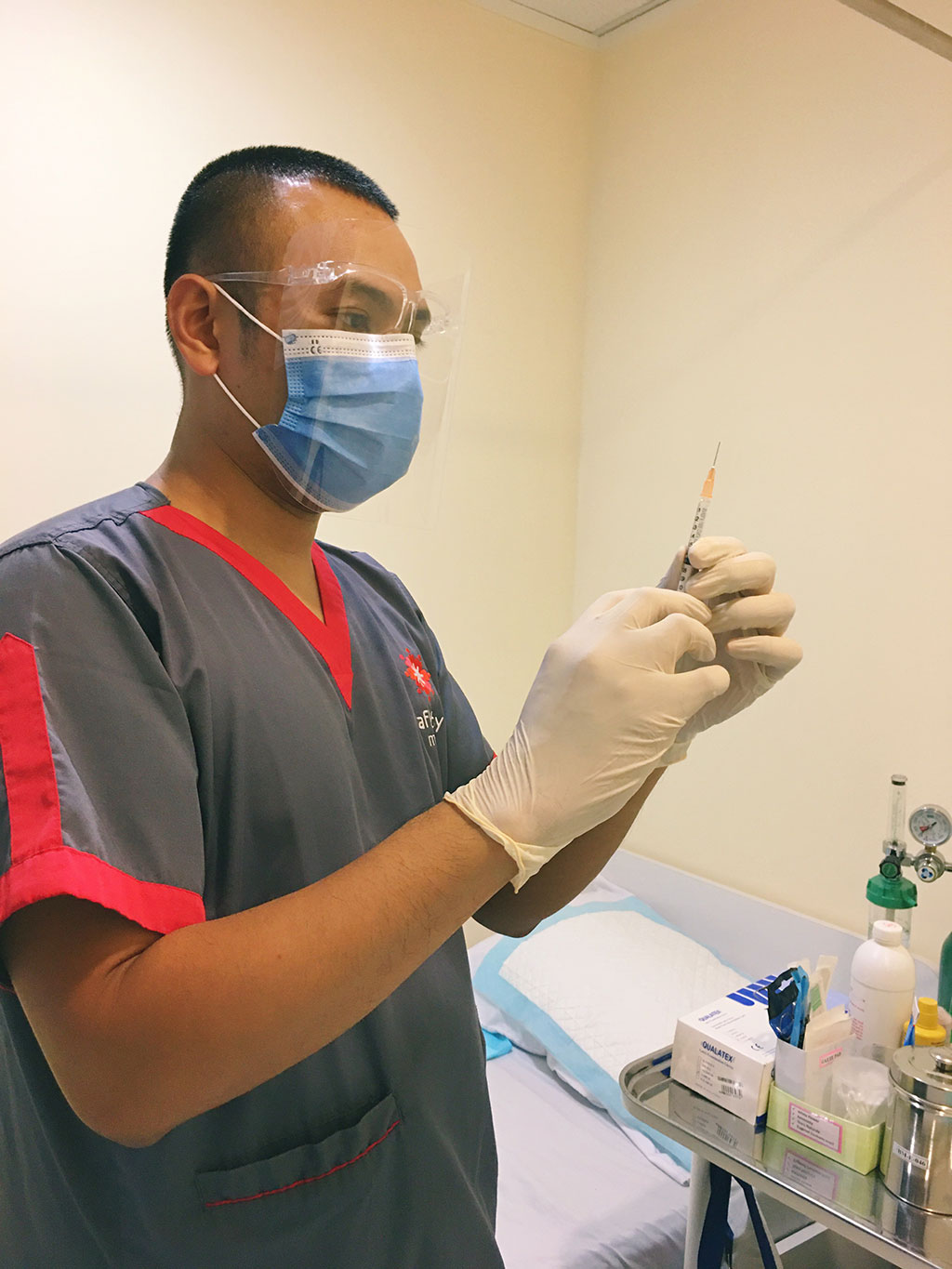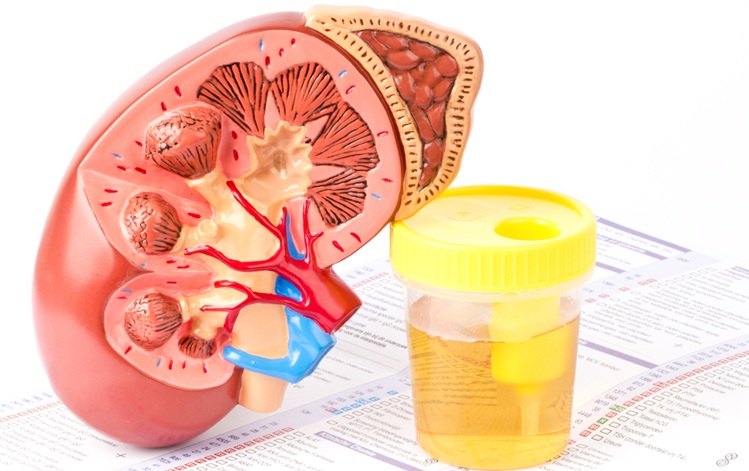Unified Approach Could Prevent Unnecessary Blood Tests in PICU without Increasing Sepsis Risk
|
By LabMedica International staff writers Posted on 03 May 2022 |

When a patient in the pediatric intensive care unit (PICU) develops a fever, physicians often routinely order a blood culture to identify the cause, particularly if they have reason to worry about sepsis, a life-threatening condition that occurs when chemicals released by immune system cells in the bloodstream to fight an infection trigger inflammation and shock throughout the body. However, repeated blood draws along with the use of antibiotics while awaiting culture results contribute to a rise in antibiotic resistance, leading to additional testing and extending the hospital length of stay. Now, researchers have developed and demonstrated the safety of a decision support program that appears to substantially reduce the number of blood draws in the PICU, and is likely to reduce antibiotic prescriptions without increasing the risk of sepsis.
The new study which was a national collaborative of 14 institutions and their experts, including researchers at Johns Hopkins University (Baltimore, MD, USA), builds on programs already in place that have safely reduced the use of other diagnostic tests, such as urine cultures. According to data from the U.S. Centers for Disease Control and Prevention, about 30% of antibiotics used in hospitals are unnecessary or prescribed incorrectly. Previous studies from other researchers have found that more than half of patients in the PICU often receive antibiotics for symptoms such as fever that may arise from noninfectious illnesses or even weaning from some medications.
In their study, the research team at Johns Hopkins Children’s Center led a national multidisciplinary collaborative of experts in pediatric infectious diseases, critical care medicine, quality improvement and other fields called BrighT STAR (Testing STewardship to reduce Antibiotic Resistance). The goal was to explore and compare existing studies and practices, and produce guidance recommendations to reduce blood draws in patients with low suspicion or risk for sepsis, and to measure the impact of the algorithm on blood culture rates, broad-spectrum antibiotic use and other patient outcomes. The 14 participating sites were diverse with respect to institution size, patient population and geographic area. Johns Hopkins Medicine investigators provided each site, which had its own team of experts, with a pre-implementation assessment tool while coaching them to launch their own quality improvement programs and strategies to execute the plans.
While the composition of the clinical support tools varied, each institution sought to standardize practices across its unit and reduce variability in decisions in ordering blood cultures, as well as highlight patient safety considerations. Blood culture rates, along with other measures, were tracked and reported monthly. The coordinating team held regular calls with individual sites and the larger collaborative throughout all steps of the project, conducted between 2017 and 2020.
In the 24-month period prior to implementation of the quality improvement algorithms, 41,731 blood cultures were performed at all 14 sites, compared with 22,408 cultures in the 18-month post-implementation period. Across sites, the median blood culture rate dropped from 146 per 1,000 patient days/month before implementation to 99 per 1,000 patient days/month after. Overall, 13 of 14 sites reduced their blood culture rates in the post-implementation period between 15% and 58%. Across the 14 sites, the blood culture rate was reduced by an average of 34% between the study’s pre- and post-implementation time frames (156.9 blood cultures per 1,000 patient days/month to 104.1 blood cultures per 1,000 patient days/month).
In the 11 sites that reported on antibiotic use, results showed a 13% overall average reduction in the amount of antibiotics prescribed (506.0 versus 440.3 total days per 1,000 patient days/month). At all 14 sites, central line-associated bloodstream infections decreased by 36% (1.79 to 1.14 per 1,000 central line days/month). There was no significant change in the rates of one of the most frequent and dangerous hospital-acquired infections, Clostridioides difficile (0.38 vs. 0.36 infections per 1,000 patient days/month). Mortality rates, length of stay and readmission in the PICU, as well as overall hospital readmissions, were similar before and after program implementation.
The research team has cautioned that the study may have missed instances in which antibiotics were prescribed without collecting blood cultures, which could have increased the amount prescribed. Also, all sites enrolled in the study had clinicians and others experienced in quality improvement. The researchers additionally say their analyses do not account for variations in individual site implementation plans. However, they believe their concept will help change clinician decision-making and, ultimately, benefit patients. The researchers are seeking to expand and implement a similar approach at all hospitals across the nation. They are also investigating ways to scale this concept to other hospital units, including those caring for adults.
“These findings suggest that multidisciplinary efforts to standardize blood culture collection and avoid unnecessary testing in the PICU can be done successfully and safely in diverse settings, and that reducing blood culture use can, in turn, reduce broad-spectrum antibiotic use,” said pediatric infectious diseases specialist Aaron Milstone, M.D., M.H.S., who is also a professor of pediatrics at the Johns Hopkins University School of Medicine and an expert on systems designed to prevent hospital-acquired infections and improve patient safety.
Related Links:
Johns Hopkins University
Latest Microbiology News
- Fast Noninvasive Bedside Test Uses Sugar Fingerprint to Detect Fungal Infections
- Rapid Sepsis Diagnostic Device to Enable Personalized Critical Care for ICU Patients
- Microfluidic Platform Assesses Neutrophil Function in Sepsis Patients
- New Diagnostic Method Confirms Sepsis Infections Earlier
- New Markers Could Predict Risk of Severe Chlamydia Infection
- Portable Spectroscopy Rapidly and Noninvasively Detects Bacterial Species in Vaginal Fluid
- CRISPR-Based Saliva Test Detects Tuberculosis Directly from Sputum
- Urine-Based Assay Diagnoses Common Lung Infection in Immunocompromised People
- Saliva Test Detects Implant-Related Microbial Risks
- New Platform Leverages AI and Quantum Computing to Predict Salmonella Antimicrobial Resistance
- Early Detection of Gut Microbiota Metabolite Linked to Atherosclerosis Could Revolutionize Diagnosis
- Viral Load Tests Can Help Predict Mpox Severity
- Gut Microbiota Analysis Enables Early and Non-Invasive Detection of Gestational Diabetes
- Credit Card-Sized Test Boosts TB Detection in HIV Hotspots
- Fecal Metabolite Profiling Predicts Mortality in Critically Ill Patients
- Portable Molecular POC System Rules Out UTIs in Just 35 Minutes
Channels
Clinical Chemistry
view channel
VOCs Show Promise for Early Multi-Cancer Detection
Early cancer detection is critical to improving survival rates, but most current screening methods focus on individual cancer types and often involve invasive procedures. This makes it difficult to identify... Read more
Portable Raman Spectroscopy Offers Cost-Effective Kidney Disease Diagnosis at POC
Kidney disease is typically diagnosed through blood or urine tests, often when patients present with symptoms such as blood in urine, shortness of breath, or weight loss. While these tests are common,... Read moreMolecular Diagnostics
view channel
Urine Test Detects Early Stage Pancreatic Cancer
Pancreatic cancer remains among the hardest cancers to detect early. In the UK, around 10,000 people are diagnosed each year, but only 5% survive beyond five years. Late diagnosis is a major factor—more... Read more
Genomic Test Could Reduce Lymph Node Biopsy Surgery in Melanoma Patients
Accurately determining whether melanoma has spread to the lymph nodes is crucial for guiding treatment decisions, yet the standard procedure—sentinel lymph node biopsy—remains invasive, costly, and unnecessary... Read moreHematology
view channel
Viscoelastic Testing Could Improve Treatment of Maternal Hemorrhage
Postpartum hemorrhage, severe bleeding after childbirth, remains one of the leading causes of maternal mortality worldwide, yet many of these deaths are preventable. Standard care can be hindered by delays... Read more
Pioneering Model Measures Radiation Exposure in Blood for Precise Cancer Treatments
Scientists have long focused on protecting organs near tumors during radiotherapy, but blood — a vital, circulating tissue — has largely been excluded from dose calculations. Each blood cell passing through... Read more
Platelets Could Improve Early and Minimally Invasive Detection of Cancer
Platelets are widely recognized for their role in blood clotting and scab formation, but they also play a crucial role in immune defense by detecting pathogens and recruiting immune cells.... Read more
Portable and Disposable Device Obtains Platelet-Rich Plasma Without Complex Equipment
Platelet-rich plasma (PRP) plays a crucial role in regenerative medicine due to its ability to accelerate healing and repair tissue. However, obtaining PRP traditionally requires expensive centrifugation... Read moreImmunology
view channel
Blood-Based Liquid Biopsy Model Analyzes Immunotherapy Effectiveness
Immunotherapy has revolutionized cancer care by harnessing the immune system to fight tumors, yet predicting who will benefit remains a major challenge. Many patients undergo costly and taxing treatment... Read more
Signature Genes Predict T-Cell Expansion in Cancer Immunotherapy
Modern cancer immunotherapies rely on the ability of CD8⁺ T cells to rapidly multiply within tumors, generating the immune force needed to eliminate cancer cells. However, the biological triggers behind... Read moreMicrobiology
view channel
Fast Noninvasive Bedside Test Uses Sugar Fingerprint to Detect Fungal Infections
Candida bloodstream infections are a growing global health threat, causing an estimated 6 million cases and 3.8 million deaths annually. Hospitals are particularly vulnerable, as weakened patients after... Read more
Rapid Sepsis Diagnostic Device to Enable Personalized Critical Care for ICU Patients
Sepsis is a life-threatening condition that occurs when the body’s response to infection spirals out of control, damaging organs and leading to critical illness. Patients often arrive at intensive care... Read morePathology
view channel
New Molecular Analysis Tool to Improve Disease Diagnosis
Accurately distinguishing between similar biomolecules such as proteins is vital for biomedical research and diagnostics, yet existing analytical tools often fail to detect subtle structural or compositional... Read more
Tears Offer Noninvasive Alternative for Diagnosing Neurodegenerative Diseases
Diagnosing and monitoring eye and neurodegenerative diseases often requires invasive procedures to access ocular fluids. Ocular fluids like aqueous humor and vitreous humor contain valuable molecular information... Read moreTechnology
view channel
Cell-Sorting Device Uses Electromagnetic Levitation to Precisely Direct Cell Movement
Sorting different cell types—such as cancerous versus healthy or live versus dead cells—is a critical task in biology and medicine. However, conventional methods often require labeling, chemical exposure,... Read more
Embedded GPU Platform Enables Rapid Blood Profiling for POC Diagnostics
Blood tests remain a cornerstone of medical diagnostics, but traditional imaging and analysis methods can be slow, costly, and reliant on dyes or contrast agents. Now, scientists have developed a real-time,... Read moreIndustry
view channel
Puritan Medical Products Showcasing Innovation at AMP2025 in Boston
Puritan Medical Products (Guilford, ME, USA), the world’s most trusted manufacturer of swabs and specimen collection devices, is set to exhibit at AMP2025 in Boston, Massachusetts, from November 11–15.... Read more
Advanced Instruments Merged Under Nova Biomedical Name
Advanced Instruments (Norwood, MA, USA) and Nova Biomedical (Waltham, MA, USA) are now officially doing business under a single, unified brand. This transformation is expected to deliver greater value... Read more






















